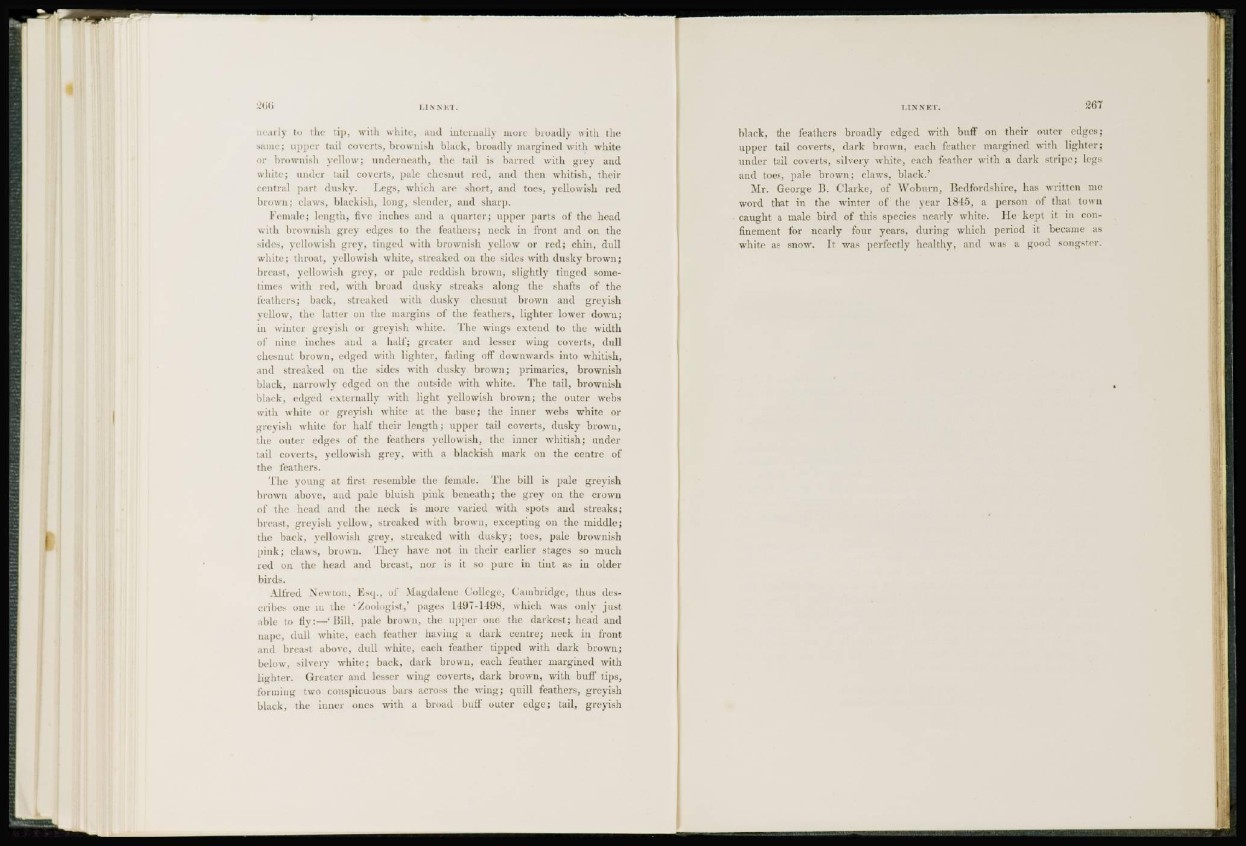
in ii l\ to the tip, with white, and internally more broadly with the
same; apper tail coverts, brownish black, broadly margined with white
or brownish yellow; underneath, the tail is barred with grey and
white; under tail coverts, pale chesnut red, and then whitish, their
central part dusky. Legs, which are short, and toes, yellowish red
brown; claws, blackish, long, slender, and sharp.
Female; length, five inches and a quarter; upper parts of the head
with brownish grey edges to the feathers; neck in front and on the
sides, yellowish grey, tinged with brownish yellow or red; chin, dull
white; throat, yellowish white, streaked on the sides with dusky brown;
breast, yellowish grey, or pale reddish brown, slightly tinged somelimes
with red, with broad dusky streaks along the shafts of the
feathers; back, streaked with dusky chesnut brown and greyish
yellow, the latter on the margins of the feathers, lighter lower down;
in winter greyish or greyish white. The wings extend to the width
of nine inches and a half; greater and lesser wing coverts, dull
chesnut brown, edged with lighter, fading off downwards into whitish,
and streaked on the sides with dusky brown; primaries, brownish
black, narrowly edged on the outside with white. The tail, brownish
black, edged externally with light yellowish brown; the outer webs
with white or greyish white at the base; the inner webs white or
greyish white for half their length; upper tail coverts, dusky brown,
the outer edges of the feathers yellowish, the inner whitish; undertail
coverts, yellowish grey, with a blackish mark on the centre of
the feathers.
The young at first resemble the female. The bill is pale grevish
brown above, and pale bluish pink beneath; the grey on the crown
of the head and the neck is more varied with spots and streaks;
breast, grevish yellow, streaked with brown, excepting on the middle;
the back, yellowish grey, streaked with dusky; toes, pale brownish
pink; claws, brown. They have not in their earlier stages so much
red on the head and breast, nor is it so pure in tint as in older
birds.
Alfred Newton. Esq.. of .Magdalene College, Cambridge, thus describes
one i n the •Zoologist,' pages 1497-1498, which was only just
able to fly:—'Bill, pale brown, the upper one the darkest; head and
nape, dull white, each feather having a dark centre; neck in front
and breast above, dull white, each feather tipped with dark brown;
below, silvery white; back, dark brown, each feather margined with
lighter. Greater and lesser wing coverts, dark brown, with buff tips,
forming two conspicuous bars across the wing; quill feathers, greyish
black, the inner ones with a broad buff outer edge; tail, greyish
black, the feathers broadly edged with buff* on their outer edges;
upper tail coverts, dark brown, each feather margined with lighter;
under mil coverts, silvery white, each feather with a dark stripe; legs
and toes, pale brown; claws, black.1
Mr. George 1!. Clarke, of Woburn, Bedfordshire, has written me
word that in the winter of the year 1845, a person of that town
caught a male bird of this species nearly white. lie kept it in confinement
for nearly four years, during which period it became as
white as snow. It was perfectly healthy, and was a good songster.